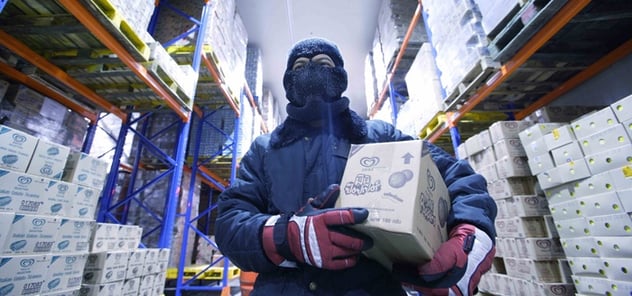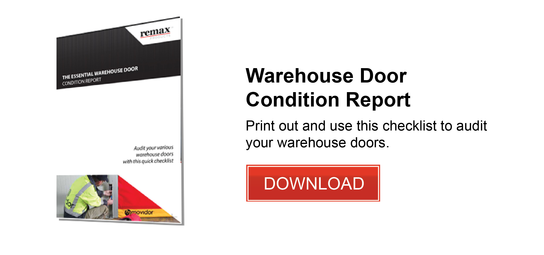Rapid Roller Doors - The Key to Temperature Management

The Australian Government Department of Health and Ageing estimated over 5 million food poisoning cases in Australia, some of which may have been caused by bacteria due to improper storage of the food products. In addition, The Australia Institute found that $5.2 billion worth of food is thrown out every year. Whilst Australians contribute to this through bulk purchasing of food, it can also be caused by poor cold chain management, which resulted in the food failing to achieve the ‘best before’ or ‘use by’ date.
The 2013 Australian Food Cold Chain Logistic Guidelines highlights the importance of businesses meeting the temperature guidelines of the Food Safety Standards. They state that product temperatures warmer than those in the Food Safety Standard will support the rapid growth of bacteria and microorganisms, and the longer those products are kept at elevated temperatures, deterioration in product quality becomes more rapid, and the potential for food-borne illnesses are increased.
The cold chain involves many steps and a series of businesses responsible for manufacturing, transporting, storing, retailing and serving food products as well as the flow of foods to consumers, who take them home for preparation and consumption.
Therefore it is crucial for these businesses to go beyond operating an effective cold storage facility, and further into maintaining the temperature for their facility. The 2013 Australian Food Cold Chain Logistic Guidelines outlines several measures to take in order to control cold store temperatures effectively:
- Minimise air temperature variation by reducing the number of door openings and traffic movement in and out of the cold storage facility
- Install necessary mechanisms to lower temperature as soon as they are increased
- Ensure defrost cycle systems are adequately designed to prevent any product heating up
- Install appropriate trigger alarms to ensure prompt corrective action
- Ensure damaged walls and door seals that could leak cold air out and allow hot ambient air in are promptly repaired
- Ensure optimum stacking patterns and floor layout to facilitate airflow
- Most importantly, conduct regular checks of the facility including compressor, defrost cycle, thermostat, cooling tower equipment, walls and doors to ensure everything is in good working order.
As outlined above, maintaining the proper temperature for cold storage facilities requires a number of different components, from the right cooling system to the right monitoring tools.

The Simplest Way to Maintain Cold Store Temperature
One of the key aspects of a cold storage facility is the main entry door, as it is the means by which the cool temperature is locked within the room. In addition, the door is potentially the simplest way to maintain cold store temperature, as compared to complex cooling systems or monitoring tools.
Aside from taking the appropriate measures such as minimising door openings or the traffic in and out of the facility, you can control the temperature of your cold storage facility more effectively with the right door.
The Ideal Door for Temperature & Air Transfer Control?
The ideal Cold Strage Facility door should have the capability to seal a room properly to maintain the internal cool temperature. When it comes to freezer doorways, where multiple openings per hour reduce effectiveness of insulated doors, yet necessitate exceptional air-tightness; it is necessary to have a door with insulated and heated guides and frames to ensure the room is sealed properly when the door is closed.
It is also crucial for this door to have high-speed operation to close as soon as traffic has entered or left the room. Slow-closing doors allow warm air 'spikes' to enter the cold storage facility and will adversely impact temperature stability, energy costs, and quality of the food stored.
Automated doors will assist in preventing doors being left open longer than necessary by staff while theyenter/exit the temperature controlled area. Rapid Doors offer a range of sensors catering for a variety of sites.

Movidor High Speed Rapid Doors offer a tight seal and high-speed mechanism to ensure quality is maintained without extensive maintenance costs. Suitably specified high speed doors will prevent air infiltration to your cold store, freezer or temperature zoned facility to maintain and improve the shelf-life of stored products, ultimately protecting your business from costly temperature loss or gain.
To learn about the rapid door that best suits your cold storage facility, refer to our blog on the key considerations for selecting high-speed doors. Or, to determine the effectiveness of your current warehouse doors, refer to the Warehouse Door Condition Report checklist below.





